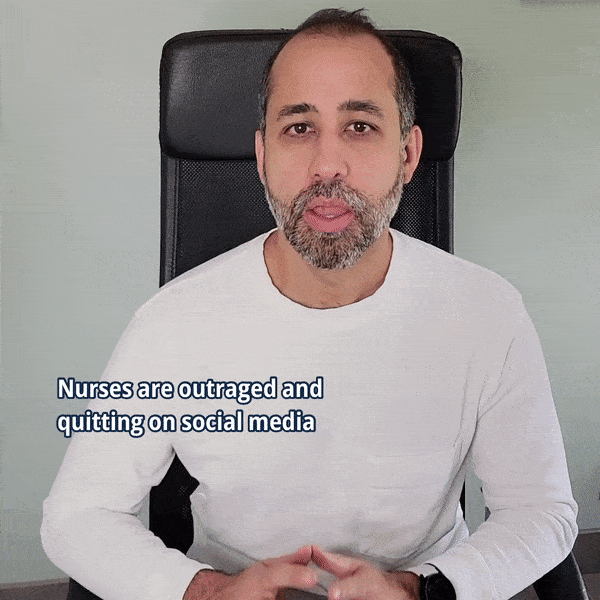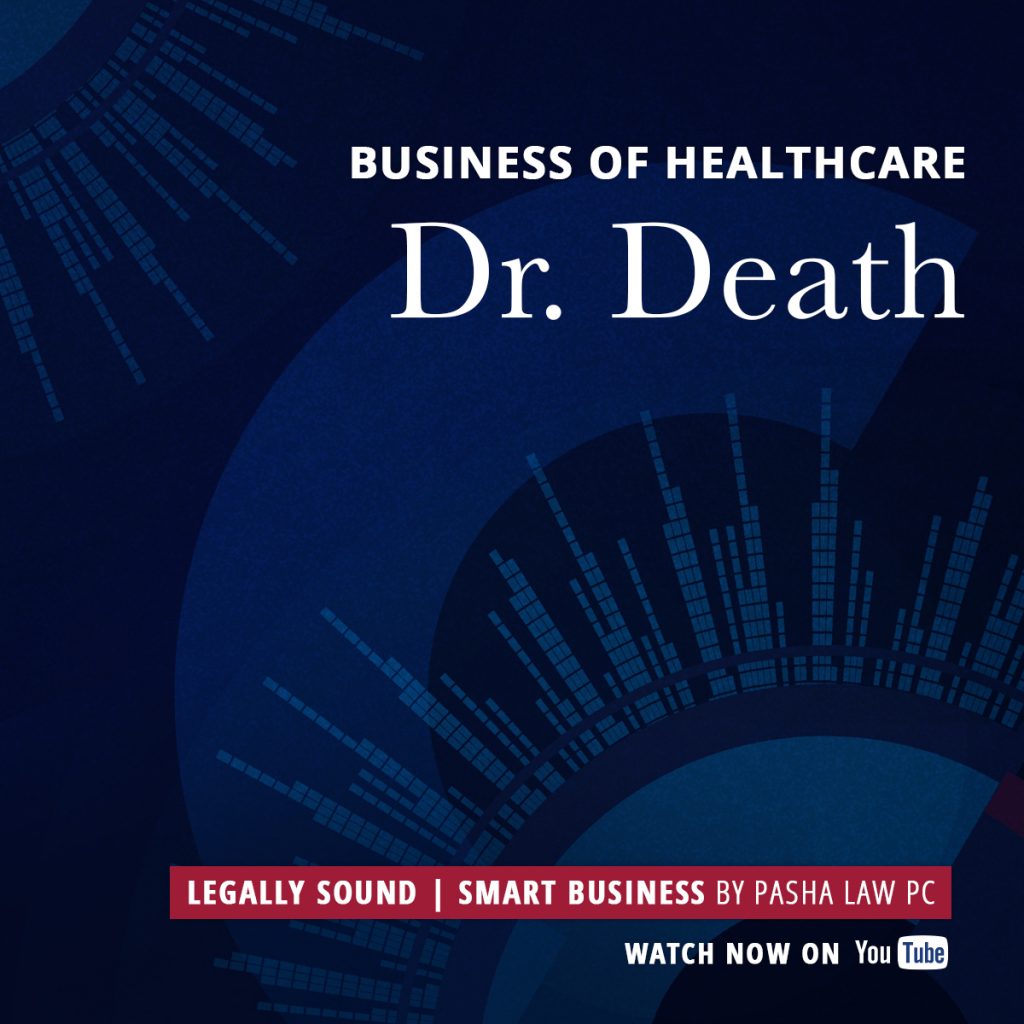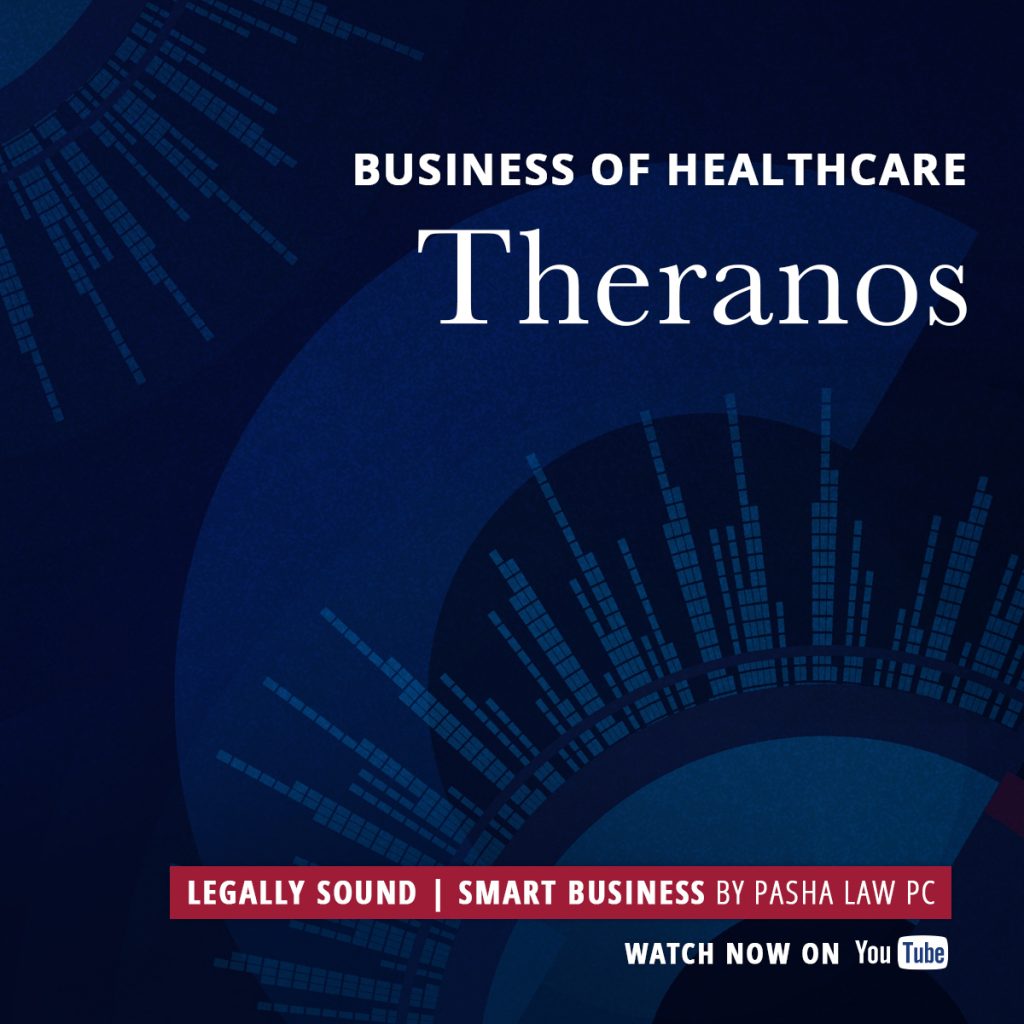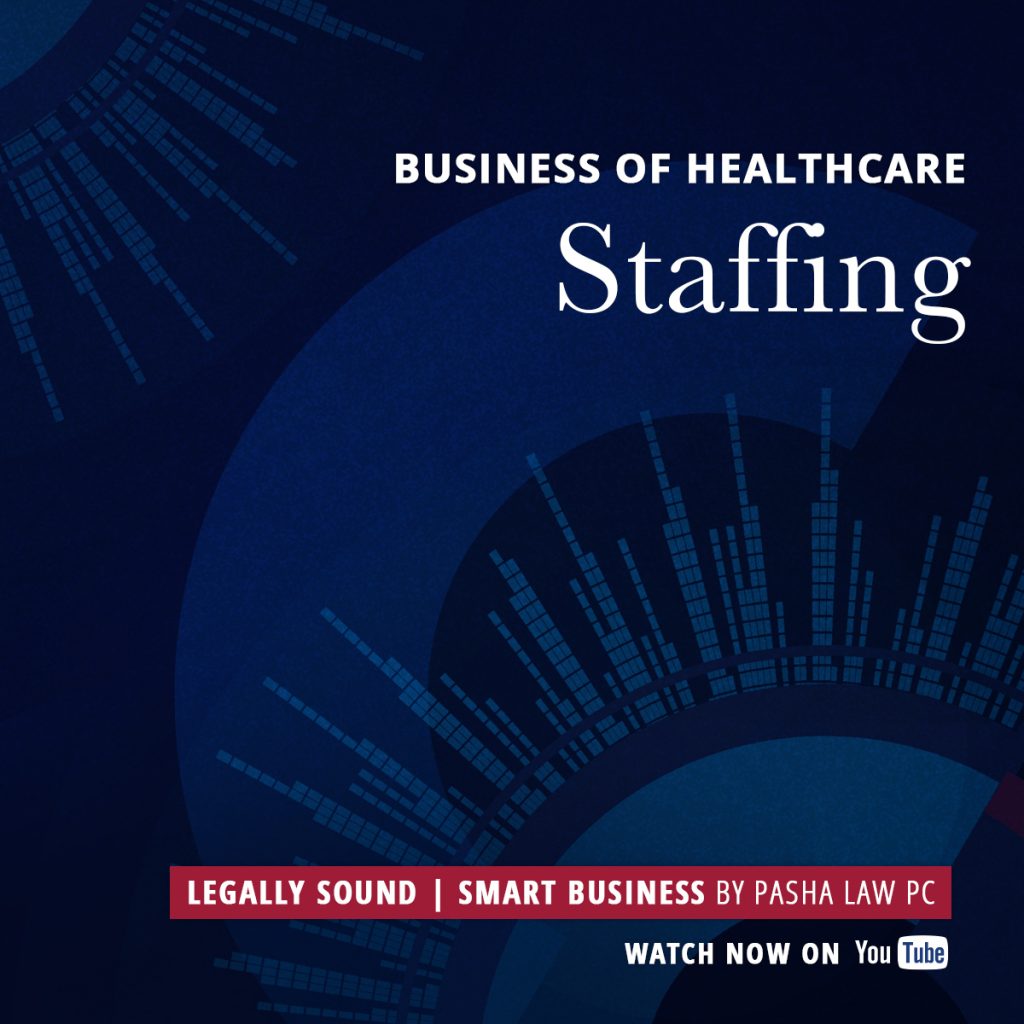The 2019 Legislative session has come and gone, and much has changed for the Texas healthcare sector. When it comes to emergency rooms, legislative changes supposedly created a more transparent, patient friendly future for Out-Of-Network (“OON”) emergency centers.
But what the laws actually created were a complicated legal framework that significantly alters OON operations. OONs now face larger fines for simple missteps on tasks like patient billing, marketing materials, and updating fee schedules.
Below we’ve summarized some key legislative outcomes. This post acts as a useful primer while the healthcare community awaits the related rules coming from the Texas Department of Insurance (“TDI”) and the Texas Attorney General’s Office.
Prohibition of Balance Billing
Let’s address the elephant in the room—balance billing is pretty much over for OON emergency services. Texas. H.B. 1264 strips away that right and limits the OON emergency room to only collecting the applicable copayment, coinsurance, and deductible, amounts provided to OONs by the insurance company.
The insurance companies have their own requirements too. They must provide a Balance Billing Prohibition Notice that states the patient’s benefits, how much the patient may be billed, and certain quotes from the new insurance provisions.
However, H.B. 1264 isn’t all doom and gloom. It does expand payment options for OON emergency rooms. With the restriction on balance billing comes the expansion of mandated insurance payments. The new law is more specific regarding payment methods. Reimbursement for emergency services now includes medical supplies in addition to care. Thus, ONNs should adopt accurate itemized billing in order to maximize their rights under the bill.
EPO and HMO plans have had their mandated payment increased to “usual and customary” language in lieu of the “preferred provider” language.
New [Prompt] Pay Deadlines
Earlier this year, certain OON emergency room facilities pushed the Attorney General of Texas to give them an opinion on the applicability of the Texas Prompt Pay statute to OON providers. Predictably, the AG’s response was a resounding “no.”
However, the Texas Legislature has saved the day by implementing 30 and 45-day turnarounds for insurer OON payments. This applies to all clean provider claims, both electronic and non-electronic. This in itself may change billing cycles across Texas, but only if the provider enforces their newly granted right.
Arbitration of Professional Fees and Mediation for Facility Fees
The bill also establishes an arbitration process for professional fees and a mediation process for facility fees.
An arbitrator will be assigned to professional fee disputes and will make a decision no later than 51 days after a request for arbitration has been made. The arbitrator is given a range in which the fees may fall. The range falls between the 50th percentile of contracted rates and essentially the 80th percentile of usual and customary.
Both parties submit estimates as to how much should be paid. The party whose estimate is closest to the arbitrator’s decision gets their payment granted. This is a big boon to professional ER physicians, and with the ability to bundle multiple fees for arbitration, this may become the new normal for professional fee appeals in Texas.
Mediation for facilities fees is a bit less exciting. It will eventually become a fully automated process through the Texas Department of Insurance’s website. Mediation is to be held no later than 180 days after the request and both parties will provide documents for the mediator to review. There is no price range for the mediator to work within, thus payment may or may not increase with this new development. While arbitration may replace the current appeal cycle for many professionals, the newer mediation development probably won’t expand to other types of facilities.
Renewed Focus on Disclosures to the Patients and Marketing: Now with Bite!
Advertising for Out-Of-Network emergency centers has largely flown under the radar, especially advertising belonging to OONs that do not take Medicare. With minimal oversight, it was easy for OON emergency centers to market and attract patients as they pleased. The Texas Legislature has taken aim at educating the patient base through new, rigid guidelines as to what must be disclosed to patients and how it should be disclosed.
Penalty for Noncompliance
What if an emergency center slips up and forgets its new disclosure duties?
Previously, the State could only penalize an OON emergency center $1,000 dollars per violation with a cap of $5,000 dollars no matter the duration of the violation. Now, the new bill retains the $1,000 dollar per violation rate and can consider each subsequent day a separate violation. The $5,000 cap has also been removed. Even simple mistakes will become much more expensive.
Website Notices
Section 254.155 of the Health and Safety Code already required notices on both facilities and websites. H.B. 2014 makes some changes to the language in the notice and adds a new stipulation that “a facility may not add to or alter the language of the notice required by this section.” Furthermore, the facility’s website must feature the notice through a homepage link titled “Insurance Information” and displayed prominently on the webpage.
Disclosure Requirements
Section 254.156 contains new and significant disclosure requirements, which must be provided to the patient or their representative. Emergency centers must provide patients with a written document in bold, 16 point font and in both Spanish and English that states:
- The facility observations and facility fees that may result from the visit
- The networks that the provider is a part of, or a statement that it is an OON provider in respect to all plans.
- Name and Contact information of the facility
- A place for the patient/representative and a facility representative to sign
- “This facility charges a facility fee for medical treatment”, which includes statements about
- The facility’s median facility fee
- A range of possible facility fees
- The facility fees for each level of care provided at the facility
- A similar statement must be done for the observation charges, if the emergency room charges for observation.
Some portion of the above may be posted on the facility’s website. As one can see, the Texas Legislature is attempting to hold both emergency centers and hospitals to similar disclosure requirements regarding billing and rates.
Marketing Restrictions
If is wasn’t onerous enough, the Legislature is also adding new restrictions to marketing. Essentially, an OON provider may never refer to itself as a network provider if it is essentially relying on PPO benefits. No more “we take” or “we accept” type language.
It seems the Legislature is trying to make the OON status of the emergency room as apparent as possible. The new marketing and disclosure requirements will take time to implement, but the longer emergency centers take to comply, the greater the potential fine.
H.B. 1941 – The Introduction of “Unconscionable Prices” at Emergency Centers
Not only is the Texas Department of Insurance and its Commissioner gaining newfound powers when it comes to OON emergency rooms, but the Texas Attorney General’s Consumer Protection Division is also gaining authority. The Texas Legislature is targeting what it believes are bad actors in the emergency center space, the ones charging “unconscionable prices” for emergency room treatment.
If a center charges such prices, the policy now qualifies as a “deceptive trade” practice, and the Attorney General’s office may bring legal action against the emergency room. To avoid charging unconscionable fees, the OON emergency room’s rates must be lower than 200% of the average charge for similar care provided by the nearest hospital-based emergency rooms. Emergency centers must carefully monitor the fee schedule since the Attorney General may also demand attorney’s fees from the offending emergency room.
The Legislature has clearly changed the legal landscape for OON emergency centers, but it’s not over yet. In the upcoming months, various Texas government agencies will request comments and clarification as they attempt to execute the Texas Legislature’s new rules. It will be important for everyone involved to keep tabs on what comes out of these sessions. The only thing we all know for sure is that there is a lot of compliance work to be done before January 1, 2020.
This isn’t the only Texas business sector affected by new laws. Read about new updates to Texas’ data privacy laws. Or read about San Antonio’s recent legal battles.
![California v. Texas: Which is Better for Business? [313]](https://www.pashalaw.com/wp-content/uploads/2021/07/Pasha_LSSB_CaliforniaVSTexas-1024x723.jpg)









![Business of Healthcare [e316]](https://www.pashalaw.com/wp-content/uploads/2021/11/Pasha_LSSB_BusinessofHealthcare_banner-1024x723.jpg)




![Law in the Digital Age: Exploring the Legal Intricacies of Artificial Intelligence [e323]](https://www.pashalaw.com/wp-content/uploads/2023/11/WhatsApp-Image-2023-11-21-at-13.24.49_4a326c9e-300x212.jpg)
![Unraveling the Workforce: Navigating the Aftermath of Mass Layoffs [e322]](https://www.pashalaw.com/wp-content/uploads/2023/07/Untitled-design-23-300x212.png)
![Return to the Office vs. Remote: What Can Employers Legally Enforce? [e321]](https://www.pashalaw.com/wp-content/uploads/2023/01/Pasha_LSSB_321_banner-300x212.jpg)
![Explaining the Hans Niemann Chess Lawsuit v. Magnus Carlsen [e320]](https://www.pashalaw.com/wp-content/uploads/2022/10/LAWYER-EXPLAINS-7-300x169.png)
![California v. Texas: Which is Better for Business? [313]](https://www.pashalaw.com/wp-content/uploads/2021/07/Pasha_LSSB_CaliforniaVSTexas-300x212.jpg)
![Buyers vs. Sellers: Negotiating Mergers & Acquisitions [e319]](https://www.pashalaw.com/wp-content/uploads/2022/06/Pasha_LSSB_BuyersVsSellers_banner-300x212.jpg)
![Employers vs. Employees: When Are Employment Restrictions Fair? [e318]](https://www.pashalaw.com/wp-content/uploads/2022/05/Pasha_LSSB_EmployeesVsEmployers_banner-1-300x212.jpg)
![Vaccine Mandates Supreme Court Rulings [E317]](https://www.pashalaw.com/wp-content/uploads/2022/02/WhatsApp-Image-2022-02-11-at-4.10.32-PM-300x212.jpeg)
![Business of Healthcare [e316]](https://www.pashalaw.com/wp-content/uploads/2021/11/Pasha_LSSB_BusinessofHealthcare_banner-300x212.jpg)
![Social Media and the Law [e315]](https://www.pashalaw.com/wp-content/uploads/2021/10/WhatsApp-Image-2021-10-06-at-1.43.08-PM-300x212.jpeg)
![Defining NDA Boundaries: When does it go too far? [e314]](https://www.pashalaw.com/wp-content/uploads/2021/09/Pasha_LSSB_NDA_WordPress-2-300x212.jpg)
![More Than a Mistake: Business Blunders to Avoid [312] Top Five Business Blunders](https://www.pashalaw.com/wp-content/uploads/2021/06/Pasha_LSSB_Blunders_WP-1-300x212.jpg)
![Is There a Right Way to Fire an Employee? We Ask the Experts [311]](https://www.pashalaw.com/wp-content/uploads/2021/02/Pasha_LSSB_FireAnEmployee_Website-300x200.jpg)
![The New Frontier: Navigating Business Law During a Pandemic [310]](https://www.pashalaw.com/wp-content/uploads/2020/12/Pasha_LSSB_Epidsode308_Covid_Web-1-300x200.jpg)
![Wrap Up | Behind the Buy [8/8] [309]](https://www.pashalaw.com/wp-content/uploads/2020/11/Pasha_BehindTheBuy_Episode8-300x200.jpg)
![Is it all over? | Behind the Buy [7/8] [308]](https://www.pashalaw.com/wp-content/uploads/2020/09/iStock-1153248856-overlay-scaled-300x200.jpg)
![Fight for Your [Trademark] Rights | Behind the Buy [6/8] [307]](https://www.pashalaw.com/wp-content/uploads/2020/07/Fight-for-your-trademark-right-300x200.jpg)
![They Let It Slip | Behind the Buy [5/8] [306]](https://www.pashalaw.com/wp-content/uploads/2020/06/Behind-the-buy-they-let-it-slip-300x200.jpg)
![Mo’ Investigation Mo’ Problems | Behind the Buy [4/8] [305]](https://www.pashalaw.com/wp-content/uploads/2020/05/interrobang-1-scaled-300x200.jpg)
![Broker or Joker | Behind the Buy [3/8] [304] Behind the buy - Broker or Joker](https://www.pashalaw.com/wp-content/uploads/2020/04/Joker-or-Broker-1-300x185.jpg)
![Intentions Are Nothing Without a Signature | Behind the Buy [2/8] [303]](https://www.pashalaw.com/wp-content/uploads/2020/04/intentions-are-nothing-without-a-signature-300x185.jpg)
![From First Steps to Final Signatures | Behind the Buy [1/8] [302]](https://www.pashalaw.com/wp-content/uploads/2020/04/first-steps-to-final-signatures-300x185.jpg)
![The Dark-side of GrubHub’s (and others’) Relationship with Restaurants [e301]](https://www.pashalaw.com/wp-content/uploads/2015/04/When-Competition-Goes-Too-Far-Ice-Cream-Truck-Edition-300x201.jpg)
![Ultimate Legal Breakdown of Internet Law & the Subscription Business Model [e300]](https://www.pashalaw.com/wp-content/uploads/2019/05/Ultimate-Legal-Breakdown-of-Internet-Law-the-Subscription-Business-Model-300x196.jpg)
![Why the Business Buying Process is Like a Wedding?: A Legal Guide [e299]](https://www.pashalaw.com/wp-content/uploads/2019/03/futura-300x169.jpg)
![Will Crowdfunding and General Solicitation Change How Companies Raise Capital? [e298]](https://www.pashalaw.com/wp-content/uploads/2018/11/Will-Crowdfunding-and-General-Solicitation-Change-How-Companies-Raise-Capital-300x159.jpg)
![Pirates, Pilots, and Passwords: Flight Sim Labs Navigates Legal Issues (w/ Marc Hoag as Guest) [e297]](https://www.pashalaw.com/wp-content/uploads/2018/07/flight-sim-labs-300x159.jpg)
![Facebook, Zuckerberg, and the Data Privacy Dilemma [e296] User data, data breach photo by Pete Souza)](https://www.pashalaw.com/wp-content/uploads/2018/04/data-300x159.jpg)
![What To Do When Your Business Is Raided By ICE [e295] I.C.E Raids business](https://www.pashalaw.com/wp-content/uploads/2018/02/ice-cover-300x159.jpg)
![General Contractors & Subcontractors in California – What you need to know [e294]](https://www.pashalaw.com/wp-content/uploads/2018/01/iStock-666960952-300x200.jpg)
![Mattress Giants v. Sleepoplis: The War On Getting You To Bed [e293]](https://www.pashalaw.com/wp-content/uploads/2017/12/sleepopolis-300x159.jpg)
![The Harassment Watershed [e292]](https://www.pashalaw.com/wp-content/uploads/2017/12/me-2-300x219.jpg)
![Investing and Immigrating to the United States: The EB-5 Green Card [e291]](https://www.pashalaw.com/wp-content/uploads/2012/12/eb-5-investment-visa-program-300x159.jpg)
![Responding to a Government Requests (Inquiries, Warrants, etc.) [e290] How to respond to government requests, inquiries, warrants and investigation](https://www.pashalaw.com/wp-content/uploads/2017/10/iStock_57303576_LARGE-300x200.jpg)
![Ultimate Legal Breakdown: Employee Dress Codes [e289]](https://www.pashalaw.com/wp-content/uploads/2017/08/Ultimate-Legal-Breakdown-Template-1-300x159.jpg)
![Ultimate Legal Breakdown: Negative Online Reviews [e288]](https://www.pashalaw.com/wp-content/uploads/2017/06/Ultimate-Legal-Breakdown-Online-Reviews-1-300x159.jpg)
![Ultimate Legal Breakdown: Social Media Marketing [e287]](https://www.pashalaw.com/wp-content/uploads/2017/06/ultimate-legal-breakdown-social-media-marketing-blur-300x159.jpg)
![Ultimate Legal Breakdown: Subscription Box Businesses [e286]](https://www.pashalaw.com/wp-content/uploads/2017/03/ultimate-legal-breakdown-subscription-box-services-pasha-law-2-300x159.jpg)
![Can Companies Protect Against Foreseeable Misuse of Apps [e285]](https://www.pashalaw.com/wp-content/uploads/2017/01/iStock-505291242-300x176.jpg)
![When Using Celebrity Deaths for Brand Promotion Crosses the Line [e284]](https://www.pashalaw.com/wp-content/uploads/2017/01/celbrity-300x159.png)
![Are Employers Liable When Employees Are Accused of Racism? [e283] Racist Employee](https://www.pashalaw.com/wp-content/uploads/2016/12/Are-employers-liable-when-an-employees-are-accused-of-racism-300x159.jpg)
![How Businesses Should Handle Unpaid Bills from Clients [e282] What to do when a client won't pay.](https://www.pashalaw.com/wp-content/uploads/2016/12/How-Businesses-Should-Handle-Unpaid-Bills-to-Clients-300x159.png)
![Can Employers Implement English Only Policies Without Discriminating? [e281]](https://www.pashalaw.com/wp-content/uploads/2016/11/Can-Employers-Impliment-English-Only-Policies-Without-Discriminating-300x159.jpg)
![Why You May No Longer See Actors’ Ages on Their IMDB Page [e280]](https://www.pashalaw.com/wp-content/uploads/2016/10/IMDB-AGE2-300x159.jpg)
![Airbnb’s Discrimination Problem and How Businesses Can Relate [e279]](https://www.pashalaw.com/wp-content/uploads/2016/09/airbnb-300x159.jpg)
![What To Do When Your Amazon Account Gets Suspended [e278]](https://www.pashalaw.com/wp-content/uploads/2016/09/What-To-Do-When-Your-Amazon-Account-Gets-Suspended-1-300x200.jpg)
![How Independent Artists Reacted to Fashion Mogul Zara’s Alleged Infringement [e277]](https://www.pashalaw.com/wp-content/uploads/2016/08/How-Independent-Artists-Reacted-to-Fashion-Mogul-Zaras-Alleged-Infringement--300x159.jpg)
![Can Brave’s Ad Replacing Software Defeat Newspapers and Copyright Law? [e276]](https://www.pashalaw.com/wp-content/uploads/2016/08/Can-Braves-Ad-Replacing-Software-Defeat-Newspapers-and-Copyright-Law-300x159.jpg)
![Why The Roger Ailes Sexual Harassment Lawsuit Is Far From Normal [e275]](https://www.pashalaw.com/wp-content/uploads/2016/07/WHY-THE-ROGER-AILES-SEXUAL-HARASSMENT-LAWSUIT-IS-FAR-FROM-NORMAL-300x159.jpeg)
![How Starbucks Turned Coveted Employer to Employee Complaints [e274]](https://www.pashalaw.com/wp-content/uploads/2016/07/iStock_54169990_LARGE-300x210.jpg)
